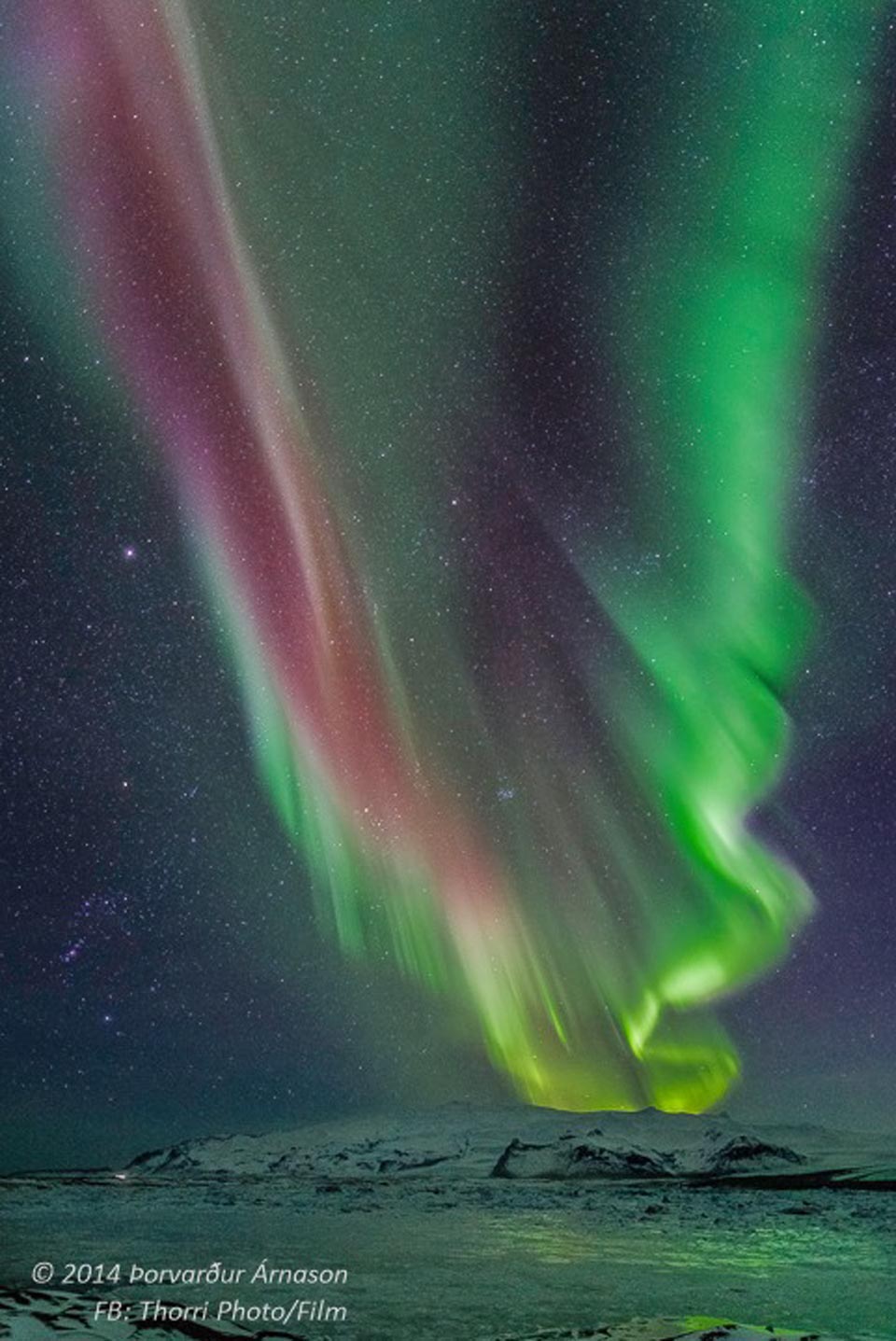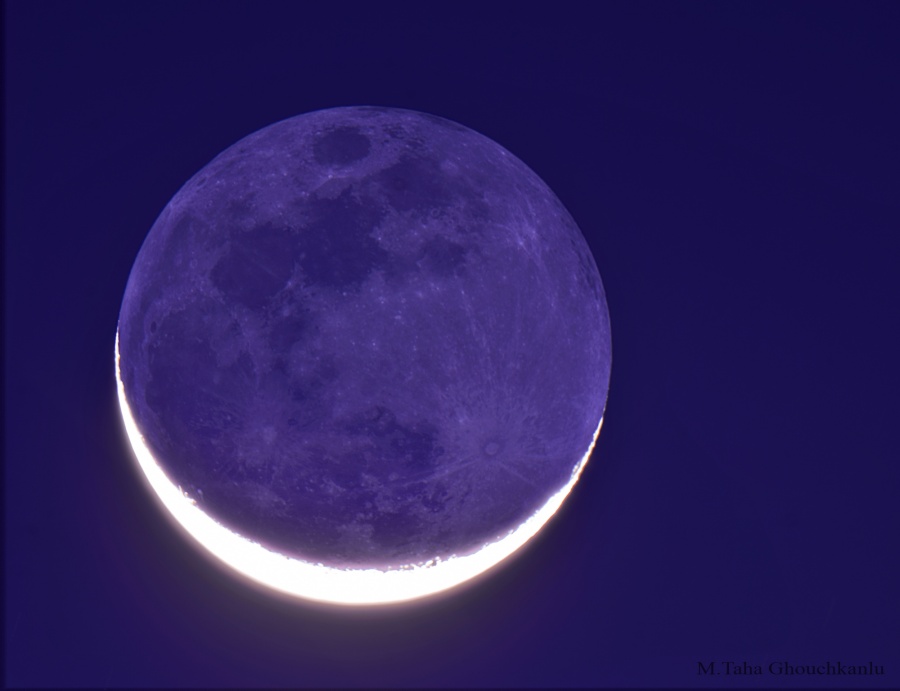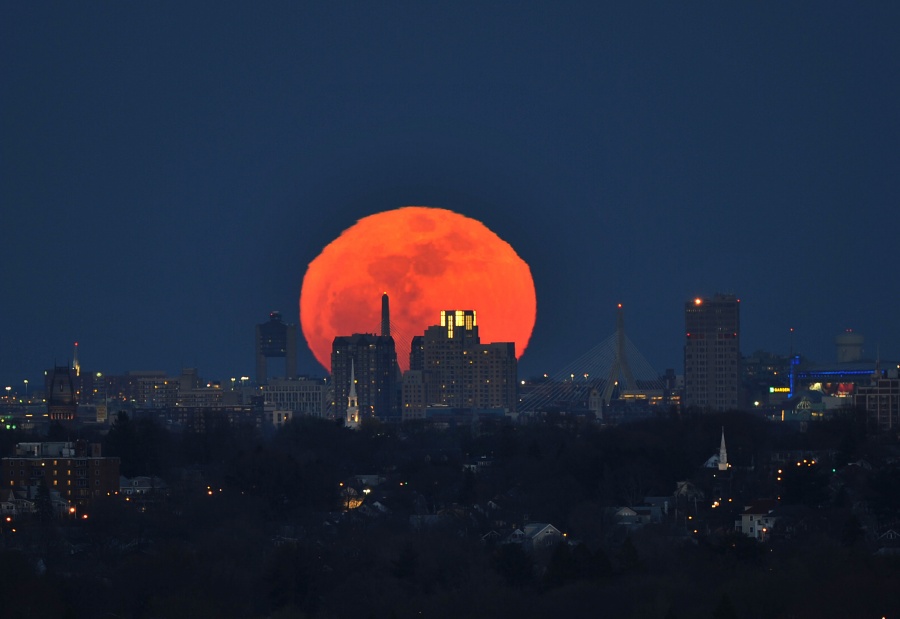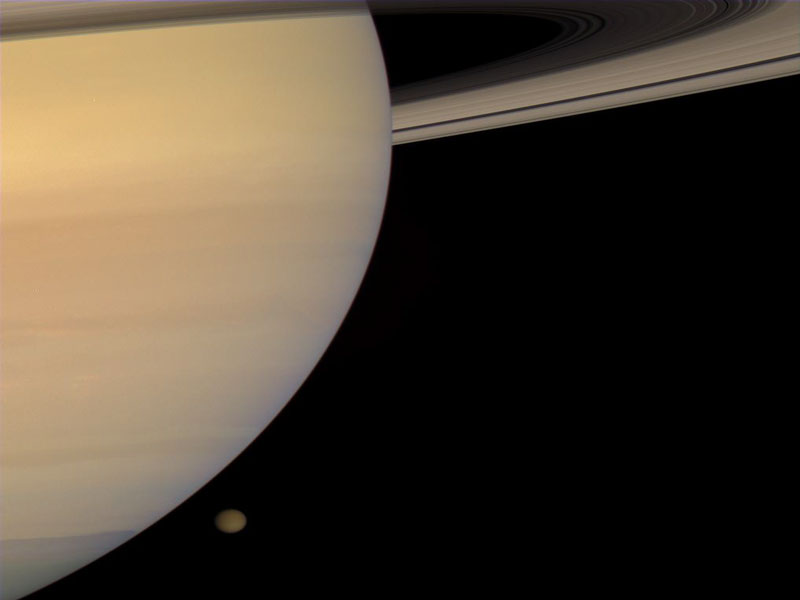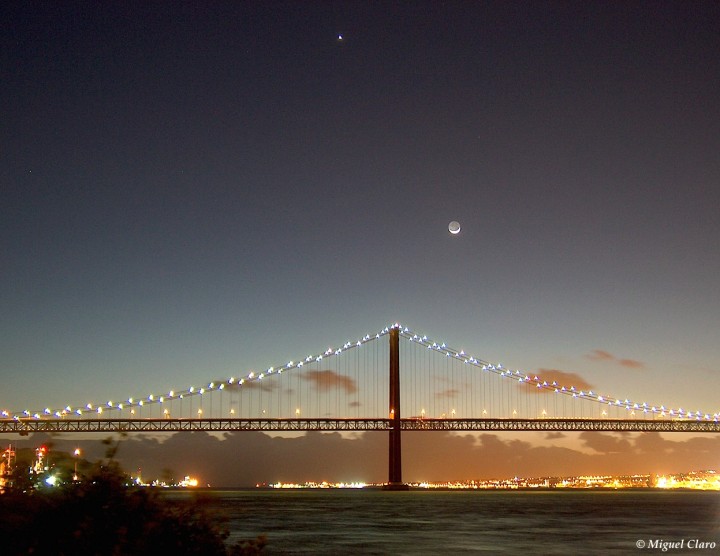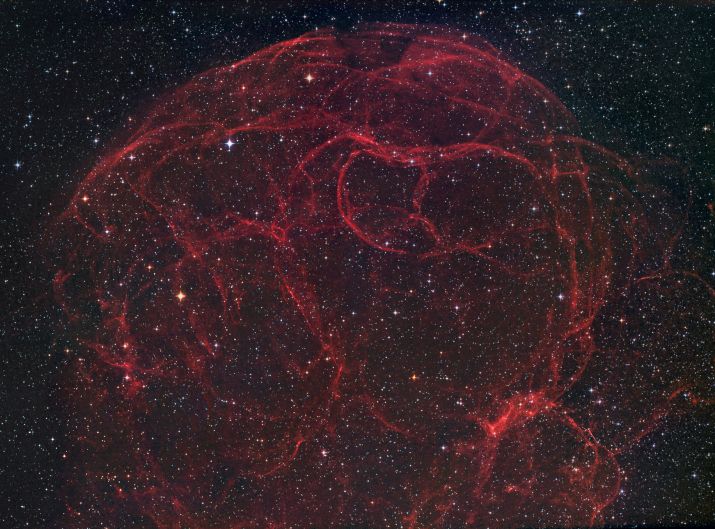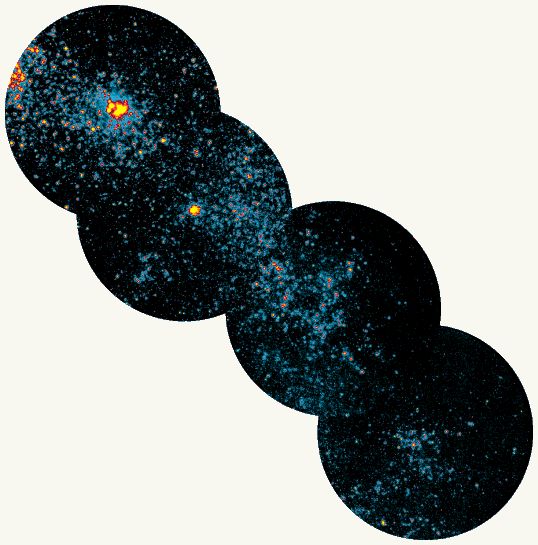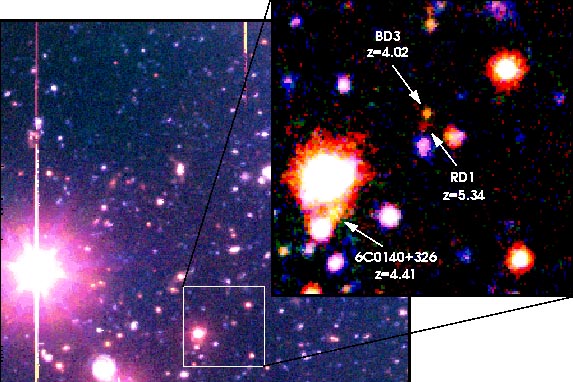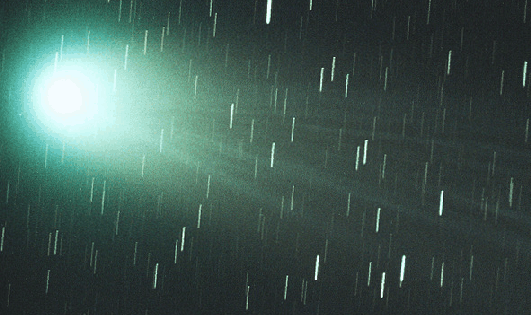| << Previous | Index | Next >> |
2015
Click to play embedded YouTube video.
Video Credit & Copyright: Charles & Ray Eames (Eames Office)
2014 If you see a sky like this -- photograph it. A month ago in Iceland, an adventurous photographer chanced across a sky full of aurora and did just that. In the foreground lies the stratovolcano Öræfajökull. In the background, among other sky delights, lies the constellation of Orion, visible to the aurora's left. Auroras are sparked by energetic particles from the Sun impacting the magnetic environment around the Earth. Resultant energetic particles such as electrons and protons rain down near the Earth's poles and impact the air. The impacted air molecules obtain excited electrons, and when electrons in oxygen molecules fall back to their ground state, they emit green light. Auroras are known to have many shapes and colors.
2013
2012 Also known as the Moon's ashen glow, Earthshine is Earthlight illuminating the Moon's night side. Taken on Nowruz, the March 20 equinox, from Esfahan, Iran, planet Earth, this telescopic image captures strong Earthshine from an old Moon. The darker earthlit disk is in the arms of a bright sunlit crescent. But the view from the Moon would have been enchanting too. When the Moon appears in Earth's sky as a slender crescent, a dazzlingly bright, nearly full Earth would be seen from the lunar surface. The Earth's brightness due to reflected sunlight is known to be strongly influenced by cloud cover. Still, a description of Earthshine, in terms of sunlight reflected by Earth's oceans in turn illuminating the Moon's dark surface, was written 500 years ago by Leonardo da Vinci.
2011 Last week's Full Moon was hard to miss. Rising on March 19, its exact full phase occurred within an hour of perigee, the closest point in the Moon's orbit to Earth. As a result it appeared some 14 percent larger and 30 percent brighter than a Full Moon near apogee, the most distant point in the elliptical lunar orbit. Seen here, the near perigee Full Moon still hugs the horizon, distorted by atmospheric refraction as it rises over Boston, Massachusetts, USA. The telescopic night skyscape was shot from Prospect Hill in Waltham, Massachusetts, roughly 10 miles from the Boston skyline. Just to the left of the orange lunar disk is the distinctive control tower at Boston's Logan International Airport. Topped by lights, the tall, twin towers of the cable-stayed Zakim Bridge spanning the Charles River are also included in the scene. If you managed to miss this perigee Full Moon, make a note on your calendar. Your next chance to see the Moon this large and bright, this time at full phase within only a few minutes of lunar perigee, will be next year on May 6.
2010 On the right, surrounded by blue spiral arms, is spiral galaxy M81. On the left, marked by red gas and dust clouds, is irregular galaxy M82. This stunning vista shows these two mammoth galaxies locked in gravitational combat, as they have been for the past billion years. The gravity from each galaxy dramatically affects the other during each hundred million-year pass. Last go-round, M82's gravity likely raised density waves rippling around M81, resulting in the richness of M81's spiral arms. But M81 left M82 with violent star forming regions and colliding gas clouds so energetic the galaxy glows in X-rays. In a few billion years only one galaxy will remain.
2009 Human made robots continue to roll across the surface of Mars. Both Opportunity and its sister rover Spirit are in their sixth year on Mars, exploring the red planet for years longer than original expectations. Pictured above is a composite of recent images taken by the navigation camera on top of the Opportunity rover in Meridiani Planum. Visible are parallel rover tracks, rippling sand dunes, light-colored bedrock protrusions, metallic rover parts, and the dark shadow of the sometimes-artistic robotic photographer. Currently, Opportunity is on its way toward huge Endeavor crater, while Spirit is trying to climb an unusual rock structure known as Home Plate. If it can survive the harsh martian environment, Opportunity should arrive at Endeavor crater in about two years, at which time it may revolutionize human knowledge of this ancient martian landform.
2008 Spectacular vistas of Saturn and its moon continue to be recorded by the Cassini spacecraft. Launched from Earth in 1997, robotic Cassini entered orbit around Saturn in 2004 and has revolutionized much of humanity's knowledge of Saturn, its expansive and complex rings, and it many old and battered moons. Soon after reaching Saturn, Cassini released the Huygen's probe which landed on Titan, Saturn's largest moon, and send back unprecedented pictures from below Titan's opaque cloud decks. Recent radar images of Titan from Cassini indicate flat regions that are likely lakes of liquid methane, indicating a complex weather system where it likely rains chemicals similar to gasoline. Pictured above, magnificent Saturn and enigmatic Titan were imaged together in true color by Cassini earlier this year.
2007 Brilliant Venus, a slender crescent Moon, and lights along the Ponte 25 de Abril glow against the western twilight in this lovely moonset scene from Lisbon, Portugal, recorded on March 20. In fact, such serene views were enjoyed across planet Earth this week, as the young Moon remained near the setting Sun following a partial solar eclipse, and Venus ruled as the evening star. Because of strong Earthshine - light from the sunlit Earth - even the Moon's night side is clearly visible in the picture. The Ponte 25 de Abril is a 2.3 kilometer long suspension bridge across the Tagus river, often compared to the Golden Gate bridge in San Francisco, USA.
2006 Not all roses are red of course, but they can still be very pretty. Likewise, the beautiful Rosette Nebula and other star forming regions are often shown in astronomical images with a predominately red hue - in part because the dominant emission in the nebula is from hydrogen atoms. Hydrogen's strongest optical emission line, known as H-alpha, is in the red region of the spectrum, but the beauty of an emission nebula need not be appreciated in red light alone. Other atoms in the nebula are also excited by energetic starlight and produce narrow emission lines as well. In this gorgeous view of the Rosette's central regions, narrow band images are combined to show emission from sulfur atoms in red, hydrogen in blue, and oxygen in green. In fact, the scheme of mapping these narrow atomic emission lines into broader colors is adopted in many Hubble images of stellar nurseries. This image spans about 50 light-years in the constellation Monoceros, at the 3,000 light-year estimated distance of the Rosette Nebula.
2005 It's easy to get lost following the intricate filaments in this detailed image of faint supernova remnant Simeis 147. Seen towards the constellation Taurus it covers nearly 3 degrees (6 full moons) on the sky corresponding to a width of 150 light-years at the stellar debris cloud's estimated distance of 3,000 light-years. The color composite image includes eight hours of exposure time with an H-alpha filter, transmiting only the light from recombining hydrogen atoms in the expanding nebulosity and tracing the regions of shocked, glowing gas. This supernova remnant has an apparent age of about 100,000 years - meaning light from the massive stellar explosion first reached Earth 100,000 years ago - but this expanding remnant is not the only aftermath. The cosmic catastrophe also left behind a spinning neutron star or pulsar, all that remains of the original star's core.
2004 What are those unusual looking dimples? Looking back toward Eagle crater, its landing place on Mars, the robot rover Opportunity has spotted some unusual depressions in the Martian soil. The dimples, visible above on the image left, each measure about one meter across and appear to have light colored rock in their interior. The nearest dimple has been dubbed "Homeplate", while the next furthest one out is called "First Base." Scrolling right will reveal a magnificent panorama including the rover in the foreground, the backshell and parachute that detached from Opportunity before it landed near the horizon, Eagle crater in the center, Opportunity's tracks as it rolled away from Eagle crater, and wind blown ripples of Martian soil in every direction. Further analysis of rocks photographed by Opportunity has yielded evidence that Opportunity has landed on an evaporated shoreline of an ancient salt-water ocean.
2003 No single spacecraft or astronaut took this picture. It is a digital composite of archived images taken by several Earth-orbiting satellites and ocean-faring ships. Similar images can be digitally stitched together for any Earth location by John Walker's Earth and Moon Viewer website. Specifically, the daytime land images were taken by the MODIS instrument on NASA's Terra satellite, while the nighttime images were taken by the DMSP satellites. This image is different from what an astronaut would see for reasons including a complete lack of clouds and an unrealistic exaggeration of lights and contrasts. The image has become both an internet wave in that it continues to circulate as an attachment to digital correspondence, and a modern urban legend. Another image like that is Earth at Night. The reason for the image's continued popularity might be simple: it is really cool looking.
2002 Three thousand light-years away, a dying star throws off shells of glowing gas. This image from the Hubble Space Telescope reveals the Cat's Eye Nebula to be one of the most complex planetary nebulae known. In fact, the features seen in the Cat's Eye are so complex that astronomers suspect the bright central object may actually be a binary star system. The term planetary nebula, used to describe this general class of objects, is misleading. Although these objects may appear round and planet-like in small telescopes, high resolution images reveal them to be stars surrounded by cocoons of gas blown off in the late stages of stellar evolution.
2001 Translated from the "acronese" the title reads - The UltraViolet Small Magellanic Cloud from the Ultraviolet Imaging Telescope. FYI, the four ultraviolet images used in this mosaic of the nearby irregular galaxy known as the Small Magellanic Cloud were taken by the UIT instrument during the Astro-1 and Astro-2 shuttle missions in 1990 and 1995. Each separate image field is slightly wider than the apparent size of the full moon. These ultraviolet pictures, shown in false color, must be taken above the Earth's absorbing atmosphere. They highlight concentrations of hot, newly formed stars only a few millions of years old, and reveal the progress of recent star formation in the SMC.
2000 Gamma rays are the most energetic form of light, packing a million or more times the energy of visible light photons. What if you could see gamma rays? If you could, the familiar skyscape of steady stars would be replaced by some of the most bizarre objects known to modern astrophysics -- and some which are unknown. When the EGRET instrument on the orbiting Compton Gamma-ray Observatory surveyed the sky in the 1990s, it cataloged 271 celestial sources of high-energy gamma-rays. These sources are very different from the powerful gamma-ray bursters that flash and fade rapidly from view, and researchers identified some with exotic black holes, neutron stars, and distant flaring galaxies. But 170 of the cataloged sources, shown in the above all-sky map, remain unidentified. Many sources in this gamma-ray mystery map likely belong to the already known classes of gamma-ray emitters and are simply obscured or too faint to be otherwise positively identified. However, astronomers recently called attention to the ribbon of sources winding through the plane of the galaxy, projected here along the middle of the map, which may represent a large unknown class of galactic gamma-ray emitters. In any event, the unidentified sources could remain a mystery until the planned launch of the more sensitive Gamma-ray Large Area Space Telescope in 2005.
1999 The spot near the bottom is an image of an unusual type of object: a brown dwarf. A brown dwarf is sometimes called a "failed star" because it does not have enough mass to shine by nuclear fusion. A brown dwarf is more massive than a planet, though, and thought to have formed through stellar-like nebular condensation. Brown dwarfs and planets are likely quite abundant, but usually difficult to see in the glare of brighter stars they orbit. New techniques, such as using coronagraphic masks to block the light of the bright star, are allowing the detection of these faint stellar companions. Above, much of the bright light of central Gliese 229A has been blocked and digitally subtracted, leaving the clearest image yet of Gliese 229B. Perfecting techniques like this increases ability to detect still dimmer Earth-type planets orbiting nearby stars.
1998 What's the farthest galaxy known? The answer keeps changing as astronomers compete to find new galaxies which top the list. The new record holder is now the faint red smudge indicated in the above image by the arrow. Detected light left this galaxy billions of years ago, well before the Earth formed, when the universe was younger than 1/10th of its present age. Astronomers have measured a redshift of 5.34 for this galaxy, breaking the "5 barrier" for the first time. Young galaxies are of much interest to astronomers because many unanswered questions exist on when and how galaxies formed in the early universe. Although this galaxy's distance exceeds that of even the farthest known quasar, it is still in front of the pervasive glowing gas that is now seen as the cosmic microwave background radiation.
1997 Would Mars be a nice place to visit? Sometimes. Much of Mars undergoes severe changes in climate during its orbit around the Sun, ranging from extreme cold to temperatures enjoyable by humans. But Mars is usually a nice place to visit for hardy spacecraft, and in fact the Mars Pathfinder and Mars Global Surveyor missions are currently headed for the "Red Planet." In preparation for the scheduled Mars Pathfinder landing on July 4th, 1997, the Earth-Orbiting Hubble Space Telescope recently took the above high resolution photograph. The picture shows the onset of Martian summer (northern hemisphere) when, apparently, the northern polar cap recedes to uncover dark sand dunes.
1996 The above true color image of Comet Hyakutake was taken the night of March 21/22. Tonight, Comet Hyakutake will make its nearest approach to Earth, closing to a mere 10 million miles as it passes over the planet's Northern Hemisphere. From dark sky areas, it's tail may be seen to cover about 20 degrees on the sky (40 times the apparent diameter of the full moon) corresponding to well over 3 million miles. at the distance of the comet. The word comet, referring to the tail, derives from the Greek "aster kometes", meaning long-haired star - and the hair of comet Hyakutake continues to grow as it nears the Sun! The tail grows as the sun heats and sublimates (changes directly from solid to gas) the material on the icy surface of the comet nucleus, sending jets of gas and dust into space. The material is swept back by the solar wind, so comet tails usually point away from the sun rather than simply trailing along behind in the comets' orbit. Some predict the tail will grow over the next few days to nearly 50 degrees. For the rest of March and most of April Comet Hyakutake will be visible to Northern viewers (weather permitting). The tail will be most visible from dark sky areas. Moonlit skies will tend to washout the comet as the April 3rd full moon approaches - however, on April 3rd, there will be a lunar eclipse!
| << Previous | Index | Next >> |
